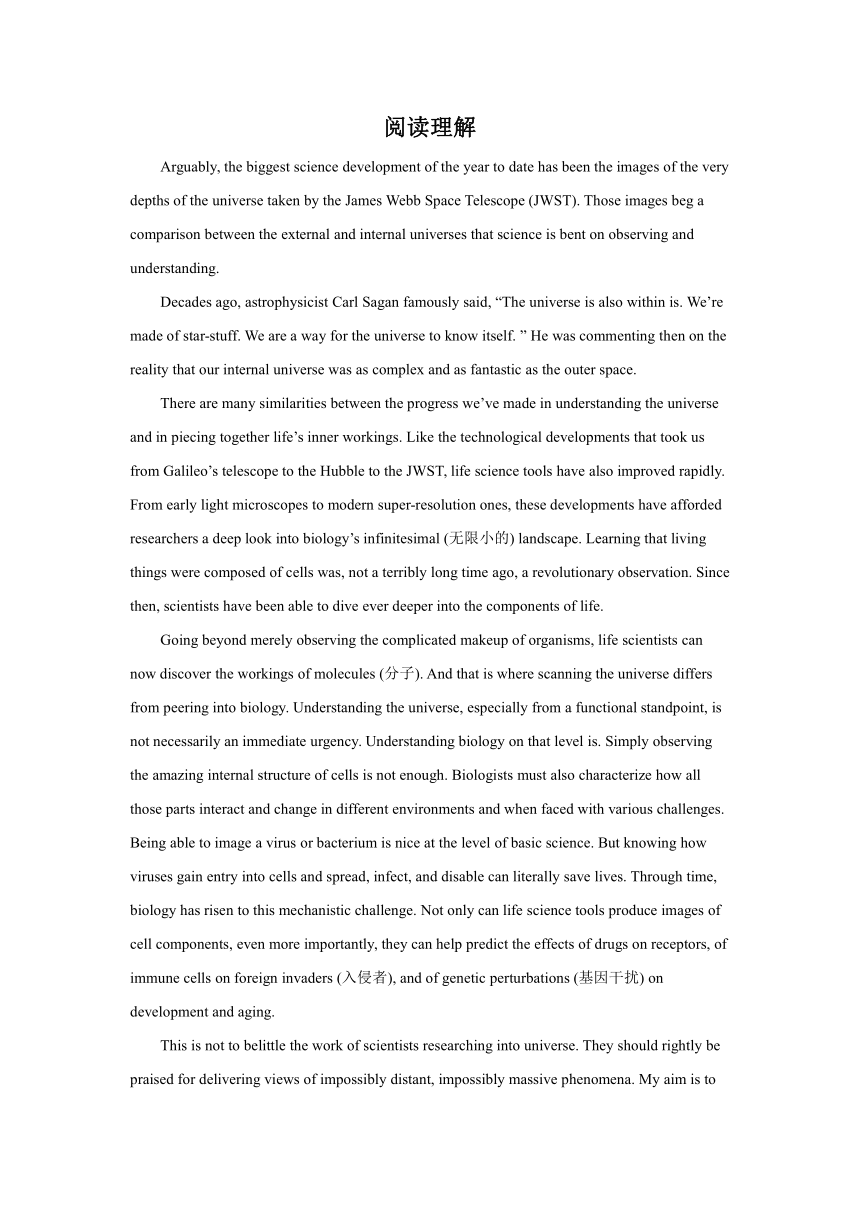
阅读理解 Arguably, the biggest science development of the year to date has been the images of the very depths of the universe taken by the James Webb Space Telescope (JWST). Those images beg a comparison between the external and internal universes that science is bent on observing and understanding. Decades ago, astrophysicist Carl Sagan famously said, “The universe is also within is. We’re made of star-stuff. We are a way for the universe to know itself. ” He was commenting then on the reality that our internal universe was as complex and as fantastic as the outer space. There are many similarities between the progress we’ve made in understanding the universe and in piecing together life’s inner workings. Like the technological developments that took us from Galileo’s telescope to the Hubble to the JWST, life science tools have also improved rapidly. From early light microscopes to modern super-resolution ones, these developments have afforded researchers a deep look into biology’s infinitesimal (无限小的) landscape. Learning that living things were composed of cells was, not a terribly long time ago, a revolutionary observation. Since then, scientists have been able to dive ever deeper into the components of life. Going beyond merely observing the complicated makeup of organisms, life scientists can now discover the workings of molecules (分子). And that is where scanning the universe differs from peering into biology. Understanding the universe, especially from a functional standpoint, is not necessarily an immediate urgency. Understanding biology on that level is. Simply observing the amazing internal structure of cells is not enough. Biologists must also characterize how all those parts interact and change in different environments and when faced with various challenges. Being able to image a virus or bacterium is nice at the level of basic science. But knowing how viruses gain entry into cells and spread, infect, and disable can literally save lives. Through time, biology has risen to this mechanistic challenge. Not only can life science tools produce images of cell components, even more importantly, they can help predict the effects of drugs on receptors, of immune cells on foreign invaders (入侵者), and of genetic perturbations (基因干扰) on development and aging. This is not to belittle the work of scientists researching into universe. They should rightly be praised for delivering views of impossibly distant, impossibly massive phenomena. My aim is to celebrate these accomplishments while at the same time recognizing that science’s inward search for detail and insight is equally impressive and, in my view, more urgent. The output of both the outward and inward explorations should stimulate wonder in everyone. After all, it’s all star-stuff. 1.Why does the author quote Carl Sagan’s comment in Paragraph 2 A.To introduce the background. B.To prove an assumption. C.To make a comparison. D.To present an idea. 2.Like the study ... ...
~~ 您好,已阅读到文档的结尾了 ~~

